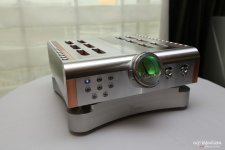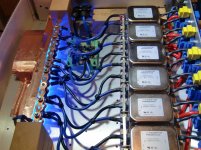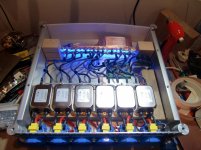Just came across this mob, looking around at "big transformers": Ultra-K Transformer (5kVA - 500kVA) -- K-Rated Isolation Transformer
What impressed me was this spec -
An externally hosted image should be here but it was not working when we last tested it.
An externally hosted image should be here but it was not working when we last tested it.
___________
Torus RM 100BAL (Power Line Conditioner):
[$8,500 - 220 pounds - lots and lots of current amps]
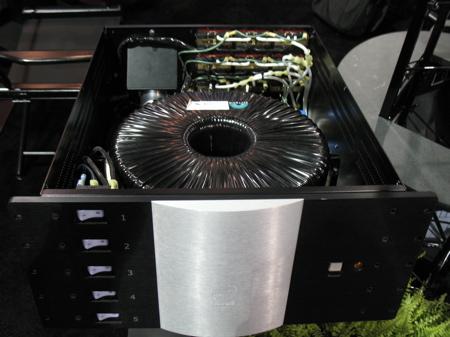
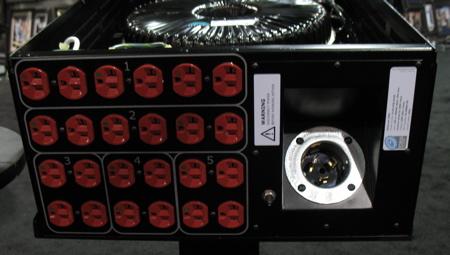
Last edited:
Rated_Isolation_Transformer.html]Ultra-K Transformer (5kVA - 500kVA) -- K-Rated Isolation Transformer[/url]
What impressed me was this spec -
Topaz Ultra-Isolation transformers have similar spec. I use them on system during tests and measurements to reduce noise and grounding issues.
Very effective.
Thx-RNmarsh
Thanks for that, Richard, but do you also use them while listening - have you made comparisons on the subjective sound quality, with and without these units?
What (and where) is the biggest world transformer?
Well, when standing at ground zero with the live working 230KV transformers at Hoover Dam, they are impressive.... built in the 1930's by GE, they have been in continuous use and are beginning to be replaced by BB of Switzerland. They looked to me to be about 3 stories tall.
Thx-RNMarsh
Thanks for that, Richard, but do you also use them while listening - have you made comparisons on the subjective sound quality, with and without these units?
yes. I also use others with outlet to outlet isolation to each piece of gear. The affect depends on how much noise you had and your equipments sensititvity to that noise. It can make a dramatic improvement.
Thx-RNMarsh
yes. I also use others with outlet to outlet isolation to each piece of gear. The affect depends on how much noise you had and your equipments sensititvity to that noise. It can make a dramatic improvement.
Thx-RNMarsh
Exactly what I've been saying for the last 12 years.
Yeah and that's only 2 years less than i have been waiting .... 😀
For what, pray tell?
Well, when standing at ground zero with the live working 230KV transformers at Hoover Dam, they are impressive.... built in the 1930's by GE, they have been in continuous use and are beginning to be replaced by BB of Switzerland. They looked to me to be about 3 stories tall.
Thx-RNMarsh
Mister Richard Marsh - minister of power; I was waiting for that type of answer. 🙂
Nice to see you here sir.
A UL nightmare? There is a lot of exposed HV and the creep distance looks small. Otherwise its 7 commercial filters in a box. What is used for fusing? I don't see grounding for the filters.
Sent from my Nexus 7 using Tapatalk
Sent from my Nexus 7 using Tapatalk
Wayne, I have not seen thee before, but they look to be very much along the lines of what I've been doing since 2001.
The basic philosophy is there - each device attached to the filter has its own dedicated filter. Thus, for any interference between any two filters, that intereference would have to pass through ist own filter, and then the other input's filter, two in series. Attenuation should be well over 120 dB, or 1,000,000:1, mening of academic importnance only.
What I don't like about this picture is a hell of a lot exposed copper. I do believe mine are tidier and safer that way as I do it using insultaede OFC wiring, exposed connection equal zero.
I did test those German made encapsulated filters, but that was quite a few years ago, so it's quite possible these are newer and better units. In those days, they were no match for mine, but now - who knows?
What is quite certain is that they cannot match mine for output in case of the Super Filter unit, intended to feed power amps. These do 20 Amps, mine does 40 Amps. Neither are ever likely to need that much from the wall socket, but if they do, the one more capable will always be mor linear because it's less stressed.
All that aside, I have said this and I repeat - the most important thing is that you have one, theirs, mine, or whoever's, because they do have a serious job to do which can pay off in spades.
Unfortunately, the bugbear of all filters ("conditioners" - God, what a communist euphemism!) is that the only way to know how and to what extent it works for you specifically is to try them at home. Everyhing else is just wishful guesswork.
Friendly suggestion - do not buy before try. If they offer no money back guarantee, just walk away, that's playing the lottery.
The basic philosophy is there - each device attached to the filter has its own dedicated filter. Thus, for any interference between any two filters, that intereference would have to pass through ist own filter, and then the other input's filter, two in series. Attenuation should be well over 120 dB, or 1,000,000:1, mening of academic importnance only.
What I don't like about this picture is a hell of a lot exposed copper. I do believe mine are tidier and safer that way as I do it using insultaede OFC wiring, exposed connection equal zero.
I did test those German made encapsulated filters, but that was quite a few years ago, so it's quite possible these are newer and better units. In those days, they were no match for mine, but now - who knows?
What is quite certain is that they cannot match mine for output in case of the Super Filter unit, intended to feed power amps. These do 20 Amps, mine does 40 Amps. Neither are ever likely to need that much from the wall socket, but if they do, the one more capable will always be mor linear because it's less stressed.
All that aside, I have said this and I repeat - the most important thing is that you have one, theirs, mine, or whoever's, because they do have a serious job to do which can pay off in spades.
Unfortunately, the bugbear of all filters ("conditioners" - God, what a communist euphemism!) is that the only way to know how and to what extent it works for you specifically is to try them at home. Everyhing else is just wishful guesswork.
Friendly suggestion - do not buy before try. If they offer no money back guarantee, just walk away, that's playing the lottery.
A UL nightmare? There is a lot of exposed HV and the creep distance looks small. Otherwise its 7 commercial filters in a box. What is used for fusing? I don't see grounding for the filters.
Sent from my Nexus 7 using Tapatalk
If you see grounding, walk away. Any filter that depends on grounding for operation is a very dicey proposal, because not only will it be influenced by the changing ground potential, but will in fact change that ground potential themselves.
BTW, mine use grounding only for the function on LED indicator.
Floating is the only way to keep ground junk from the mains out, although I suppose you could filter the ground as well, but then it starts becoming really complicated and very costly.
Wayne, I have not seen thee before, but they look to be very much along the lines of what I've been doing since 2001.
The basic philosophy is there - each device attached to the filter has its own dedicated filter. Thus, for any interference between any two filters, that intereference would have to pass through ist own filter, and then the other input's filter, two in series. Attenuation should be well over 120 dB, or 1,000,000:1, mening of academic importnance only.
What I don't like about this picture is a hell of a lot exposed copper. I do believe mine are tidier and safer that way as I do it using insultaede OFC wiring, exposed connection equal zero.
I did test those German made encapsulated filters, but that was quite a few years ago, so it's quite possible these are newer and better units. In those days, they were no match for mine, but now - who knows?
What is quite certain is that they cannot match mine for output in case of the Super Filter unit, intended to feed power amps. These do 20 Amps, mine does 40 Amps. Neither are ever likely to need that much from the wall socket, but if they do, the one more capable will always be mor linear because it's less stressed.
All that aside, I have said this and I repeat - the most important thing is that you have one, theirs, mine, or whoever's, because they do have a serious job to do which can pay off in spades.
Unfortunately, the bugbear of all filters ("conditioners" - God, what a communist euphemism!) is that the only way to know how and to what extent it works for you specifically is to try them at home. Everyhing else is just wishful guesswork.
Friendly suggestion - do not buy before try. If they offer no money back guarantee, just walk away, that's playing the lottery.
Not buying , found the pics interesting and my impression is they are for low voltage stages not amplifiers ..
If you see grounding, walk away. Any filter that depends on grounding for operation is a very dicey proposal, because not only will it be influenced by the changing ground potential, but will in fact change that ground potential themselves.
BTW, mine use grounding only for the function on LED indicator.
Floating is the only way to keep ground junk from the mains out, although I suppose you could filter the ground as well, but then it starts becoming really complicated and very costly.
You need a safety ground normally for obvious reasons. You could ditch that and use a GFCI (make sure its OK where you are to do such). Leaving the filter ungrounded may work if the filter was designed to be ungrounded (i.e. medical grade). Otherwise the common mode filtering won't work.
If all the devices are routed through the box you will get decent results. If anything goes around it all bets are off.
- Status
- Not open for further replies.
- Home
- Member Areas
- The Lounge
- Sound Quality Vs. Measurements
